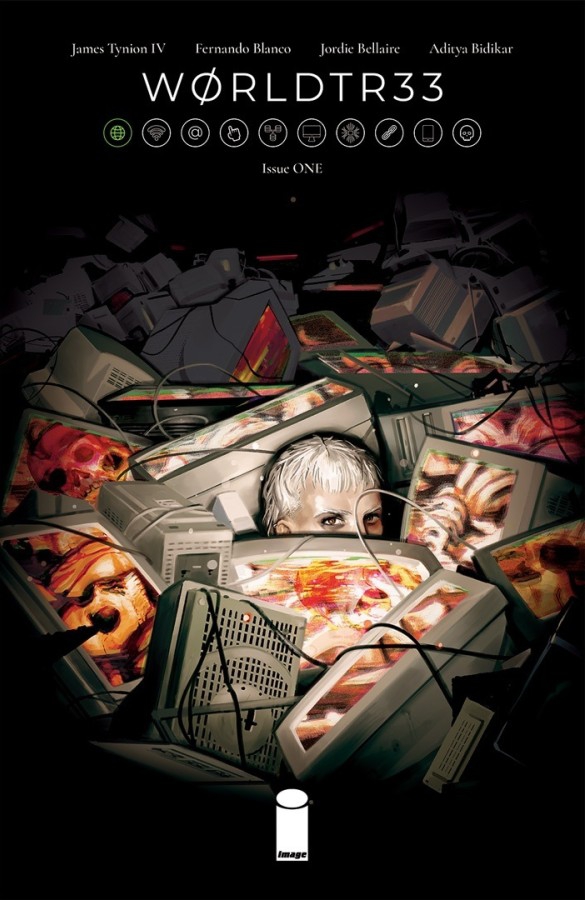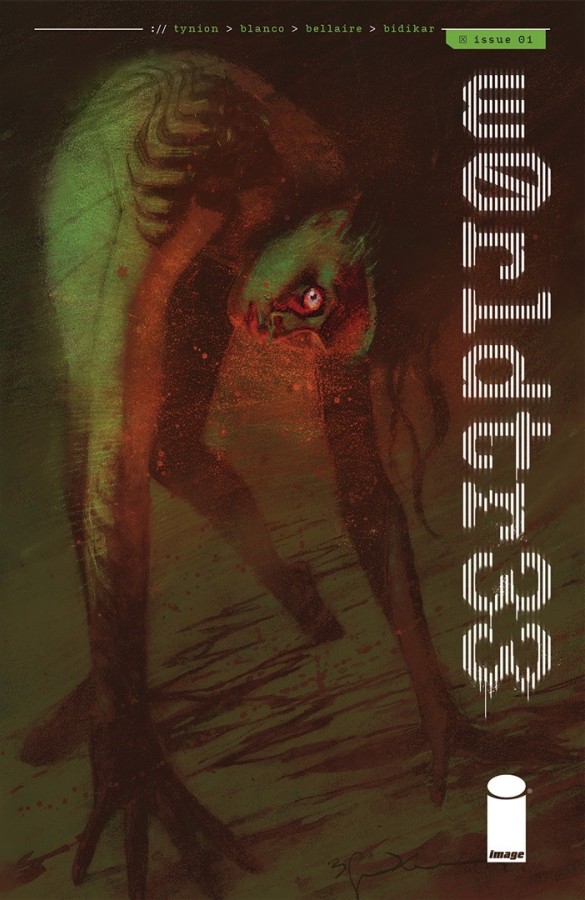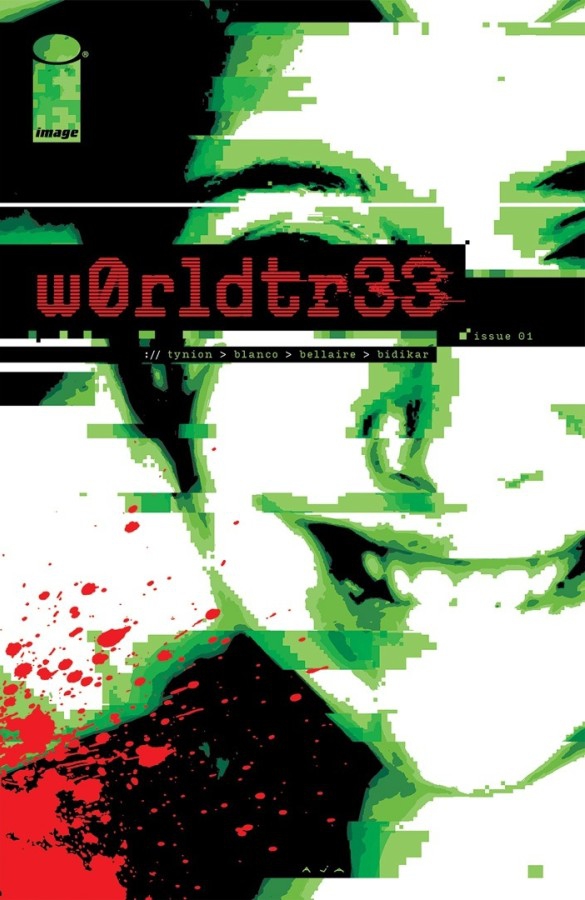James Tynion IV is one of the biggest names in comics across the map, with iconic runs on some of the biggest titles ever, such as Batman, Detective Comics, and other cape books. But Tynion's bigger focus has been on telling some of the best-selling horror stories in comic books like The Nice House on the Lake and Something is Killing the Children. His latest title W0RLDTR33, focuses on the horrors of technology and connection and is now available from Image Comics. FANGORIA spoke with James about his work, dread as an element, and the horrors that have stuck with him the longest.
You've been asked your horror origins a million times by now, I'm interested in what horror sequence has lingered in your mind the longest?
Oh, that's such a good question. I have a perfect answer because it's the thing I saw in my childhood that scared me more than anything else. And it is from the acclaimed horror classic; E.T. the Extraterrestrial. It's the sequence where Elliot sees E.T. for the first time in the cornfield, and E.T. screams. That scream is one of the most inhuman sounds that I think has ever been put on screen, and I mean, this is because Spielberg was trying to use horror to get that moment across, even though it's a heartwarming film and all of that, he wasn't afraid to let something be a little scary. But honestly, E.T. used to give me visceral nightmares. Even to this day, when I watch that scene, the hair stands up on the back of my neck. He is a horrible little potato-gremlin.
What about comics as a medium makes them so rich for exploring horror?
Well, it's funny because there are a lot of things that I would say comics actually don't do well in the horror space. There's only one opportunity every two pages to scare a reader because of how people read comics. It's only on the page turn that you can present an image that they haven't already glanced ahead and seen, which is a very rigid structure to play with and build. What it does really, really well is building dread. Because it is such a paced medium, you can slow things down, and this is what I do a lot. I will overload two pages with a lot of density of information, lots of panels, and lots of dialogue to slow the reader down to make them linger on that. Then, I can control, basically, how quickly they turn that page. It's taking hold of that tension and then choosing when to release it, when to cut against it, which is what comics do exceptionally well, and it's my favorite tool in the comic book writer toolkit.
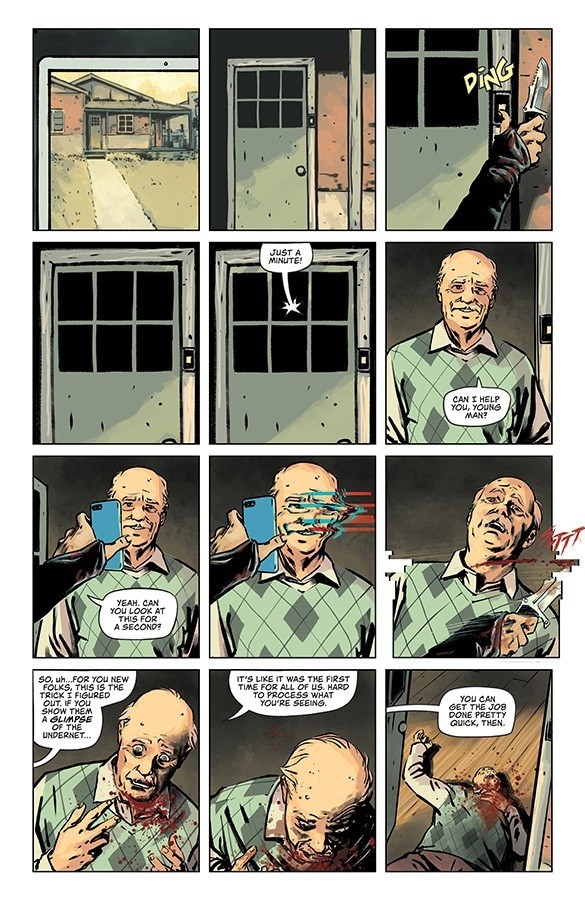
I think my editor still has my specific copy of notes from Stephen King's Dance Macabre, which was his nonfiction book about the horror genre. He goes into what the different types of horror are. Dread is much more about tension, then there's the actual horror, and then there's the gross-out. The midstep, the thing that's just full-on scaring the reader or the viewer, is the thing that comics don't do well. But they do the gross-out really well because you can linger on an image as long as you want, and they do dread really, really well, which is just about the tension and the feeling. I like to go for the gross-out, and I like to build that dread.
Dread is a very good description of the horror you've written in comics. Horror itself in comics has always been a huge thing. But we've had a huge uptick in it recently. Why do you think that is?
In the modern era, it goes back to The Walking Dead. The Walking Dead being the most successful creator-owned comic of all time, of course, we're all going to try our hands at that. But I think it's also — we're living through a cultural moment where horror is ascendant. Obviously, there was plenty of horror in the '90s and 2000s, but it was a little more muted in the culture; it was a little out of step of the central lane of the mainstream. I would say, shockingly enough, in the mid-2010s, as the world started getting a little scarier, the culture started leaning more and more into horror and leaning into it in all of its extremities, from its campiest extremes to the more sophisticated approaches.
The other important thing not discussed enough is that the generation of comic book writers and artists who started coming in the 21st century, their base influences are no longer just superhero comics; there's a wider range of interests. Not that the other generations only had those as influences, but for a while, it was a little more insular and now you see a wider range of interest. I came up under Scott Snyder, whose basis is horror writing, and that is the lens by which he even wrote superhero stuff. And that's the lens through which I approach my superhero stuff. You see different aspects of that from different writers. I've always considered horror to be my primary genre of what I enjoy writing, and so I'm very grateful that horror comics are selling right now.
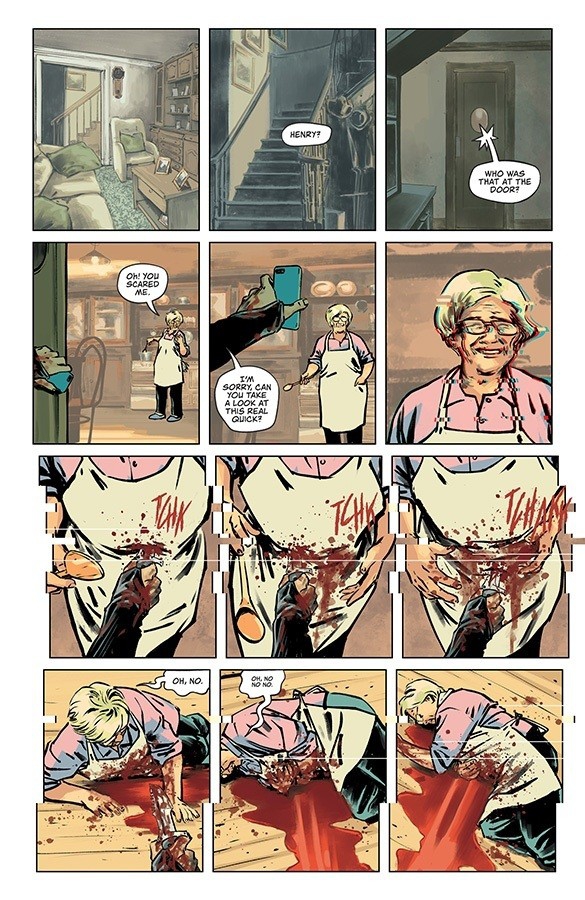
W0RLDTR33 is a heavy techno-horror. Which of your personal fears of technology do you think have most influenced the series?
One of my earliest creator-owned books, which I think they're finally putting back in print, was Mimetic. It was basically about an image posted online that ends the world in three days. That was the quick three-issue, in-and-out version of a deeper fear that's existed throughout my teen life into my adult life: information spreads faster online than we understand whether or not it's good or bad. Bad information, in fact, actually spreads faster. I started thinking about it in terms of wanting to tell a story that captured both the optimism I had about the internet when I was a kid in middle school and then the real anxiety about it that I have in my contemporary life.
It's not an aggressively cyberpunk story, but it has little touches. It was one of those things where part of what I was thinking is that we are now about 25 years out from the release of The Matrix; The Matrix was 25 years out from the heyday of the first-wave cyberpunk, stories like Akira and everything from William Gibson. I wanted to take a lot of the ideology explored there about a societal decay sped by technology. It's also a pursuit of individuality through technology. I wanted to explore that with a modern lens. I wanted to do that in a story that did not use the cyberpunk aesthetic aggressively in any obvious way.

A lot of what W0RLDTR33 deals with access to the internet, the idea of this dark heart at the source of all of it. In what ways do you want to explore our personal connection with open access to the internet and the horrors of violence that are so easily accessible from such a young age?
That's so much of the book. It is the heart of what I'm trying to go at. On a very basic level, especially early on, I think the thesis of the whole piece will start presenting itself as we move forward. But the starting point is very much the discomfort, and it's the fact that even though I think we all feel that discomfort, we don't look it in the face that often. We don't look at the fact that we are plugged into this machine that feeds us a bunch of wonderful happy things but then a flood of death and hatred. We've built our lives to the fact that we are constantly receiving that signal over and over and over and over and over again. If you want to get a little woohoo about it, WiFi is beaming through us constantly. All of the hatred of the collected human and consciousness is like beaming through our brains daily, and that's when we're not looking at our phones. The idea that this brand new thing, which has never been the case in human existence, that only really started happening in the last thirty or forty years, hasn't had a radical effect on us and isn't changing us in radical ways, is lunacy.
So, of course, it's doing all of this really fucked up shit. And it doesn't mean there aren't good things, this is a story that ultimately is going to be very humanist. I'm excited to get to the bits where I get to say what I'm hopeful for about the human race, but I'm not starting there.
When you were creating this series with Fernando, what visual aesthetics did you want to lean into?
We spent a long time talking about the ideology and passing a lot of Y2K cultural artifacts back and forth. Even though the flashbacks, for reasons that'll become clearer, happened in like 1999. I was in middle and early high school in the early to mid-2000s, so that period is what's burned into my brain. There are lots of the Wildstorm comics of that era, I think you can feel the aesthetic of those books coming off the page here.
It is one of those things where we both revisited The Matrix and asked how do you make technology viscerally interesting in a way that doesn't ape that leather coats and sunglasses look? I wanted to build all of this out. More recently, it's the work of Alex Garland. I loved both Ex Machina and Devs, which is a great pairing.
Those are the sorts of stories I was pointing him to, and then the other thing which is also a huge influence on my work is Department of Truth, the documentaries of Adam Curtis. Those really shape a lot of my thoughts about the way the world has become more complicated than our brains can actually process. So we're just trying to manage something that we are no longer fully cognizant of, nor can our brains even really process, which is terrifying. We've built something we can't manage, and that fear is something that I wanted to play with a lot.
With PH34R being the series character that people see all the time, what aesthetics did you want for that character specifically? What are you pulling from?
I knew we wanted this kind of techno assassin character who is effectively the Anton Chigurh [from No Country for Old Men] style, murderous, stalking the pages of the book, and whose agenda will become clearer as the series moves forward. There needs to be the comic book element, you need a character who kind of embodies the whole central thesis of the story and looks great on a cover. I always make sure that my books have that, this was no different. She came a little late in the storytelling process when I pulled together basically three disparate elements from an earlier version of the pitch and was just like, oh, this is all one character, and she's a naked murder lady. That is thematically very important, too, because I wanted this character's aggressive humanity and inhumanity at the exact same time to be the central driver of the story.
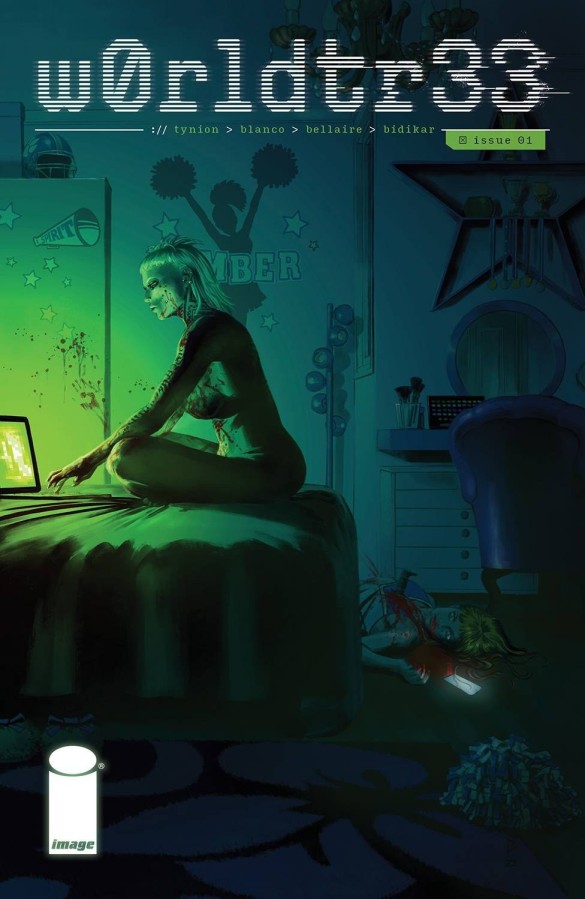
Many of the covers feature her and nudity. What about that speaks thematically to the character?
A couple of speeches in the second issue talk about what makes us human is our contact with each other, and it's contact in many different senses. The internet was built as a tool for contact, but also friendship, comfort, sex, all of that stuff is the most human drive that we have. This is someone who stripped away everything human from herself to become closer to something that is not human, and the removal of those barriers is right at the heart of the character. That was the center of the idea.
Initially, you'll see there are flashes of things from the undernet that also have similarities to how PH34R presents herself, and once we get to that point of the story, you'll see how she has modeled herself after something. It looks like she's covered in wires, she looks like she is plugged into an idea. That's what's fundamentally important about her as a character; she has stripped away all humanity. She is not trying. She is the inversion of human touch, human contact, all this stuff. And then, on top of that, you know what? We're selling comic books here. She's a sexy murder lady, and that's great, too.
With a series like Nice House on the Lake, you've explored more long-term storytelling. But this is an ongoing story. How do you prepare differently for a horror that has no definite end in sight?
To be clear, I know the end. I know the rough shape of the end of the map. I'm gonna go down every interesting rabbit hole I find along the way, but the compass is pointing in a direction, and I am following the compass. You will read this and immediately see this is also a love letter to Stephen King's work. It and The Stand, in particular, are very, very evident as influences in this. And then I would also say 20th Century Boys by Naoki Urasawa is a big part of that which also uses one of the key concepts from It, which is the group of friends from the past coming back to the present to handle a threat that they dealt with as kids. I've always loved that conceit. This is my play on that conceit. It's not just that, but that's part of the DNA.
I wanted to build a story with a large cast, where I'm able to go down each of those rabbit holes, and we're going to tell the entire story of what happened in 1999. We might even go back further than that. Ultimately, I want it to be like, this is my comic book horror novel, and it'll sit on the shelf in a couple of really thick, hardcovers. This is me trying to do a novel, so I'm extraordinarily grateful that we've had the support in the early arcs because I want there to be a lot more arcs. We can only do that if people keep buying the comic, so please keep reading.
This series is being edited by your Razorblades co-creator and editor of Department of Truth, Steve Foxe, who also writes tons of incredible horror comics. How does he push you to improve your own craft?
Part of the reason I brought in Steve is that we were in similar social circles, but we weren't all that close before we started working on Department of Truth. We became very close throughout that process, and obviously, Razorblades and beyond. Now he's a key emotional support player, ensuring I don't blow up my whole life. But I always loved that he and I have very similar tastes in horror, with some massive exceptions. We each fall on a different side of the Eggers/Aster spectrum. Sometimes I will go see a horror movie, and I'll be like, "I fucking love this," and he'll say, "No, that was trash," and vice versa.
The fact that we can talk about it allows me to sort of strip back the moments in my own horror because, a lot of times, I don't mind something being a little messy if it's raw, but I don't want it to be particularly messy. And Steve keeps it from being as messy as it might be otherwise.
W0RLDTR33 is written by James Tyion IV, art by Fernando Blanco, colors by Jordie Bellaire, and letters by Aditya Bidikar. It is available now wherever comics are sold. Find a local comic shop here.
